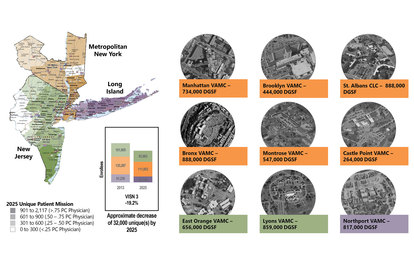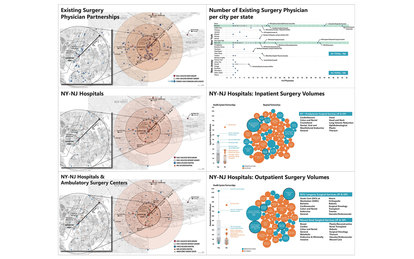Veterans Affairs Integrated Service Delivery and Strategic Master Planning
A strategic, systems-based approach to facilities master and capital planning guides the Department of Veterans Affairs vast network of healthcare facilities and delivery.
Client
U.S. Department of Veterans Affairs
Location
Multiple Locations
Markets/Services
Acute Care, Ambulatory Care, Federal, Federal Health, Health, Health Strategy, Medical Planning, Strategic & Master Plans, Veterans and Military Health
The U.S. Department of Veterans Affairs is an enormous agency, with the vital role of providing comprehensive healthcare and other benefits to military veterans throughout the country. It provides care via 1,255 healthcare facilities, including 170 medical centers and 1,074 ambulatory sites of care, structured into five regions and 18 Veteran Integrated Service Networks (VISNs) across the U.S. Like other healthcare systems, it continually looks for ways to improve patient care. This includes constantly assessing its existing clinical and other service lines on VA acute care campuses and outpatient locations and developing strategies to provide the needed services at each of its hundreds of sites.
Veterans Affairs has entrusted SmithGroup for decades, valuing the firm’s strategic, systems-based approach to planning and design. In recent years, SmithGroup has completed healthcare system and facility master plans for more than half of the VA’s VISNs. Each of these strategic master plans included multiple health campuses, multiple regional outpatient facilities and an administration buildings and sites that serve not only Veterans Health Administration but also the Veterans Benefits and National Cemetery Administrations.

The integrated planning process is a collaborative effort among the project team, VISN and regional clinician leadership, administrative leadership, and key stakeholders. It consists of two phases: Health Service Delivery Planning and Facility Master Planning. The Health Service Delivery Planning process identifies the ideal model for delivery of care based on patient health needs, demographic trends, existing facilities and sites clinical staff availability, operations, and services. With this data, the team assists VA in establishing program thresholds and productivity standards for a data-driven “ideal” delivery model.
The Facility Master Planning phase translates the ideal model into a realistic execution strategy based on facility conditions assessment index, available funding, site, and community-specific conditions. The process analyzes existing infrastructure, spaces, and functional deficiencies/surpluses, and determines what is needed to provide the services required at each location. The final master plan includes cost analysis and comparisons based on phased project schedules that align with the facility mission and strategic goals. As a result, Veterans Affairs has a strategic and systematic path forward to plan and design facilities that best serve those who have served our nation.


